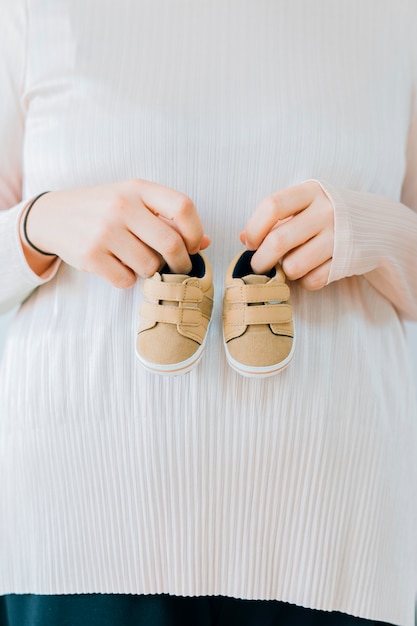
Pregnancy is a unique and amazing journey for couples as they prepare to welcome a new life into the world. It’s a time filled with excitement and anticipation, and while pregnancy can be complex on its own, expecting twins adds more layers of complexity. Carrying twins affects fetal development and introduces unique challenges along the way. Preparing both physically and emotionally can help couples navigate this extraordinary experience better. Here’s a week-by-week look at what to expect during a twin pregnancy.
### The First Trimester: Weeks 1-13
The first trimester marks the initial three months of pregnancy and brings significant changes as the body adjusts to carrying two babies. This can be a demanding period due to heightened levels of the hCG hormone, often leading to stronger and earlier pregnancy symptoms, such as nausea, fatigue, and breast tenderness.
Women who have a family history of twins or have conceived fraternal twins before might suspect a twin pregnancy early on. Signs like early positive results from a home pregnancy test, rapid uterine growth, or severe morning sickness could indicate twins. By the sixth week, twins can usually be confirmed via an ultrasound.
During this trimester, women might notice extreme fatigue, a rapidly expanding belly, frequent urination, and increased sensitivity to smells and foods. Weight gain might also begin earlier and be more significant compared to carrying a single baby.
Twins can be identical (monozygotic) or fraternal (dizygotic). Fraternal twins develop from two fertilized eggs, with each baby having its own placenta and amniotic sac, while identical twins come from one egg that splits, often sharing a placenta and amniotic sac.
Organ development begins early. By week four, the babies’ neural tubes form the brain, spinal cord, and nervous system, while tiny hearts start to beat and blood vessels are created. By weeks five through eight, major organs like the liver, kidneys, and nervous system develop rapidly. Tiny buds that become arms and legs also start to form, along with early facial features.
Symptoms like food cravings, heightened hunger due to increased energy demands, and morning sickness tend to appear during weeks five to eight. Heartburn, nasal congestion, nosebleeds, and breast tenderness may also develop. Around week eight, the babies’ hearts beat at roughly 150 beats per minute, and their organs continue forming. By week 12, the liver starts functioning, and the kidneys begin producing urine.
### The Second Trimester: Weeks 14-27
Often considered the best phase of pregnancy, the second trimester brings relief as morning sickness subsides and energy levels improve. The uterus is larger but still manageable, allowing for greater mobility. Many women feel more optimistic and begin feeling the babies’ movements during this time. With the end of the first trimester, the risk of miscarriage decreases, providing couples with a sense of relief and excitement.
Between weeks 12 and 16, many classic symptoms like nausea and fatigue start to fade, and women may notice a hearty appetite. However, new symptoms, such as vaginal discharge, headaches, and swelling of the feet, may develop. Maternity clothes become necessary as the belly grows.
By week 16, the babies weigh about 120 grams and measure around four inches each. They begin swallowing amniotic fluid and developing muscles, organs, and limbs. Their lungs start practicing breathing movements, and reflexes appear as the nervous system matures.
Around weeks 20-24, the babies’ nervous systems progress further, allowing sensations like touch and hearing to develop. Each twin grows to approximately 10 inches, and a protective coating, vernix caseosa, forms over their skin. Mothers may feel some discomfort as their bellies enlarge, including back pain, round ligament pain, and swelling.
Psychological challenges may arise as the monotony of pregnancy sets in, leading to emotional strain. Mothers may need emotional support to stay positive.
### The Third Trimester: Weeks 28-40
The final stretch of pregnancy, the third trimester, is often the most physically demanding. Women may experience significant swelling, back pain, fatigue, and difficulty finding comfortable positions due to their growing belly. Movements of the twins become more noticeable through the abdominal wall, and fetal limbs can sometimes be seen beneath the skin. Rest becomes crucial as the babies continue developing and preparing for delivery.
By week 28, each baby weighs about two pounds and measures 15 inches in length. They begin depositing fat under their skin, and their bones start to harden. Rapid brain development continues, and their hearing sharpens. At this stage, Braxton Hicks contractions may occur, signaling that the body is preparing for labor.
Between weeks 29 and 32, mothers should scale back physical activities and focus on rest. Fatigue, shortness of breath, and back pain can become more pronounced. The babies now weigh around four pounds each, and their organs and systems are nearly mature.
By week 36, the babies typically weigh between 5.5-8 pounds each and measure about 20 inches in length. They lose their lanugo (fine body hair) and shed the vernix caseosa covering their skin. Their lungs are completing the final stages of development, which is critical for preparing them to breathe independently outside the womb.
Mothers may experience new symptoms like overheating, leg cramps, constipation, Braxton Hicks contractions, and changes in appetite. Preparing for birth becomes essential during this phase, including organizing hospital visits, ensuring birthing plans are in place, and resting frequently. Doctors will closely monitor the mother’s health and the position of the babies to determine the safest delivery method, whether vaginal or via cesarean section.
### Conclusion
A twin pregnancy is a beautiful, albeit challenging, journey that requires physical and emotional readiness. It’s a time of incredible transformation, not just for the babies but for the mother as well. Staying proactive, seeking medical guidance, and ensuring adequate rest can lead to a smoother pregnancy and delivery. Ultimately, the miracle of bringing two lives into the world makes all the effort worthwhile.